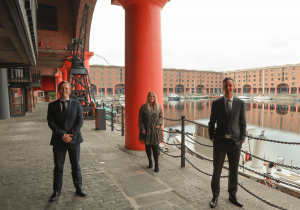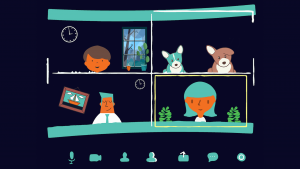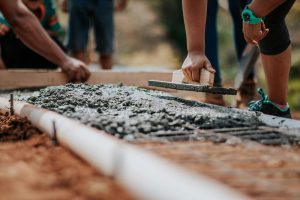For millions of years the landscape of our natural world and the plants, animals, and organisms within it have shown resilience and innovation when it comes to adaptation to climate change, depleting resource, and survival. Nature’s ingenious way of developing energy-efficient solutions to ever evolving challenges is a source of inspiration and creativity when it comes to design, engineering, and architecture. By looking at the incredible biological structures and ecosystems of plants and animals there is so much we can learn from them. Applying strategies influenced by our natural world and that emulate natural DNA into the design and production of materials, and the construction of our built environment, can help us to overcome design problems within our own human habitats. This practice is referred to as biomimicry and is an approach gaining momentum and popularity within architecture and the construction industry.
In this article, with support from Coreus Group’s Sustainability Director Maxine Goodey, Key Account Manager Lauren Banks Explores how biomimicry is inspiring the future of the construction industry.
Biomimetic Architecture
As construction strives to reduce its impact on the environment by using sustainable methodologies and practices, it is also finding ways through sustainable and environmentally friendly building materials and design. Construction companies are becoming increasingly aware of their social and environmental impact on communities and are taking steps towards more sustainable construction approaches to contribute towards the Government’s socioeconomic and environmental sustainability targets. The design of a building must be carefully considered to improve its functionality and its environmental impact. Biomimetic architecture is the process of imitating the aspects of nature that work well and applying them to elements of the design and construction of buildings. It was Biologist Janine Benyus and her book ‘Biomimicry: Innovation Inspired by Nature’ published in 1997, that first defined the ideology of biomimicry and introduced the idea that nature’s blueprints can be applied to our artificial landscape to solve design problems. Architects have designed cutting-edge and inspirational buildings that have drawn on aspects of nature to achieve their high energy efficiency but low environmental impact goals.
Examples include The Gherkin, one of the UK’s first environmentally progressive buildings, completed in 2004 and standing 180 metres tall in the city of London, it has an air ventilation system like anemones and sea sponges. In a similar method used by the sea creatures to direct sea water throughout their body to feed, the building has an exoskeleton structure that directs air throughout the building to achieve excellent ventilation. The Eastgate Development in Zimbabwe is probably the most remarkable example of biomimicry. Architect Mick Pearce was inspired by termite mounds and how their design allowed for a ventilation system that used only natural resources. The insects permeated the mound’s surface with a series of holes that resulted in an advanced approach to ‘passive ventilation.’ Unlike the heating, ventilation, and air conditioning (HVAC) systems used in most buildings, responsible for approximately 40% of a building’s energy consumption and use harmful CO2 emitting fossil fuels, the termites created a natural convection system that works by storing the heat from the atmosphere during the day and releasing it during the night. Similar to how jack rabbits and elephants use the large surface area of their ears to regulate their body temperature. The cool air at night enters the building through the series of holes, and during the day the hot air rises and escapes through the holes, creating a comfortable ambient temperature within the building. The design of the Eastgate Development building mimics that of a termite mound to create a building that is 35% more energy efficient than those using conventional HVAC systems. This efficiency not only offers a benefit to the building’s environmental impact, but also makes it cheaper to run.
Biomimetic Materials
In addition to buildings drawing inspiration from biomimicry, building materials are also taking a leaf out of nature’s book. BioMason, a biotechnology start-up, manufactures a commercial building brick developed from bacteria. The pioneering process bypasses the traditional energy-intensive and high pollutant activity of brick firing. This biotech company believes in revolutionising the construction industry by growing bricks instead of making them and shrinking concrete’s carbon footprint by up to 25% by 2030. In March this year two Australian scientists, Olawale Oloye and Professor Anthony O’Mullane from Queensland University of Technology, made a ground-breaking discovery that could support the construction sector to make a significant reduction to their carbon footprint. The cement manufacturing process, which currently accounts for up to 10% of global CO2 emissions, could be replaced by a new production technique that will have profound benefits for the environment and produce a more sustainable form of cement. The research has revealed an electrochemical process that stores carbon dioxide in sea water using wind and solar power, and that also produces two useful by-products – green hydrogen and calcium carbonate. The green hydrogen provides an environmentally friendly renewable energy source, whilst the calcium carbonate (CaCO3) delivers a building material that decarbonises the production of concrete. The discovery was inspired by the way coral produces its tough exoskeleton using carbon dioxide and minerals from the sea water to sculpt their calcium carbonate structure. Scientific research shows that producing one tonne of cement in the traditional way generates the equivalent of one tonne of CO2, however producing one tonne of cement using calcium carbonate cuts CO2 emissions by half.
Even product development for interior design is being influenced by biomimicry, with the invention of a biomimetic carpet tile. David Oakey, a sustainable product designer, created Entropy for Interface, a carpet tile whose design was inspired by the random arrangement of pebbles in a riverbed and leaves on the forest floor. This transformed the flooring industry because it allowed for non-directional patterns and gradations of colour to be used for the first time, resulting in 50% less waste than using traditional broadloom products as there was no longer a requirement to purchase excess stock to ensure replacement tiles would match up. Interface went on to develop TacTiles, a glue-free carpet adhesive inspired by a reptile. The gecko uses more than a million tiny hairs on the surface of its feet to stick to surfaces at any angle, this formed the basis of a design to improve flexibility and reduce wastage and create an environmentally friendly adhesive inspired by nature.
The Benefits of Biomimicry in Construction
There is without doubt a substantial environmental benefit for the construction industry to adopt biomimetic architectural design and building materials. Reducing the carbon footprint of a building or a manufacturing process will help to build a sustainable future in a world where we are already experiencing the effects of global warming and the hourglass is counting down towards the dangerous and devastating consequences of climate change. Architects, engineers, and construction companies need to work together and use the magnificent shapes, structures and systems that have been present in our natural environment for centuries to create biomimetic designs and innovations that will create eco-friendly and sustainable buildings of the future. The most beautiful and contemporary buildings in the world have embraced biomimicry to deliver aesthetically stunning architecture whilst creating structures that are strong, functional and compliment their bio-diverse landscapes, as well as striving to achieve energy-efficiency and low carbon impact.
At Procure Partnerships we help our clients to create iconic and sustainable buildings. Through our UK procurement frameworks and expertise in public procurement and construction frameworks, we collaborate with our contractor partners and professional service suppliers to bring a project vision inspired by nature to life.
Maxine Goodey, Sustainability Director at Coreus Group, who was born and raised in Zimbabwe commented on the Eastgate development, which is one of the most iconic buildings in the capital inspired by biomimicry.
This is what she had to say: ‘It is really one of the most incredible examples of biomimicry that exist. An architectural inspiration, and one that certainly encouraged my curiosity and love for sustainable buildings at a very young age. It’s no secret that Zimbabwe is a country that suffers from a severe lack of shortages including energy. Unfortunately, it is also experiencing increasingly longer periods of significant heat and drought due to climate change. The climate crisis is not going away and utilising innovation to copy our natural world to improve building efficiency will no doubt play a big part in the solution that will help lead us towards a Net Zero carbon future.
It is fantastic to be a part of a network like Procure Partnerships whose members place great value and have a sense of urgency in ensuring we innovate for better building design to reduce carbon emissions”.
Click Here To Download a Procure Partnerships Framework User Guide
Twitter
Linkedin

Lauren Oxland, the dedicated Key Account Manager for the West at Procure Partnerships Framework, brings seven years of industry expertise to her pivotal role. Lauren’s primary responsibility is to provide unwavering support to Public Sector framework users, facilitating the seamless appointment of main contractors and consultants for capital projects and ensuring smooth project lifecycle management.



